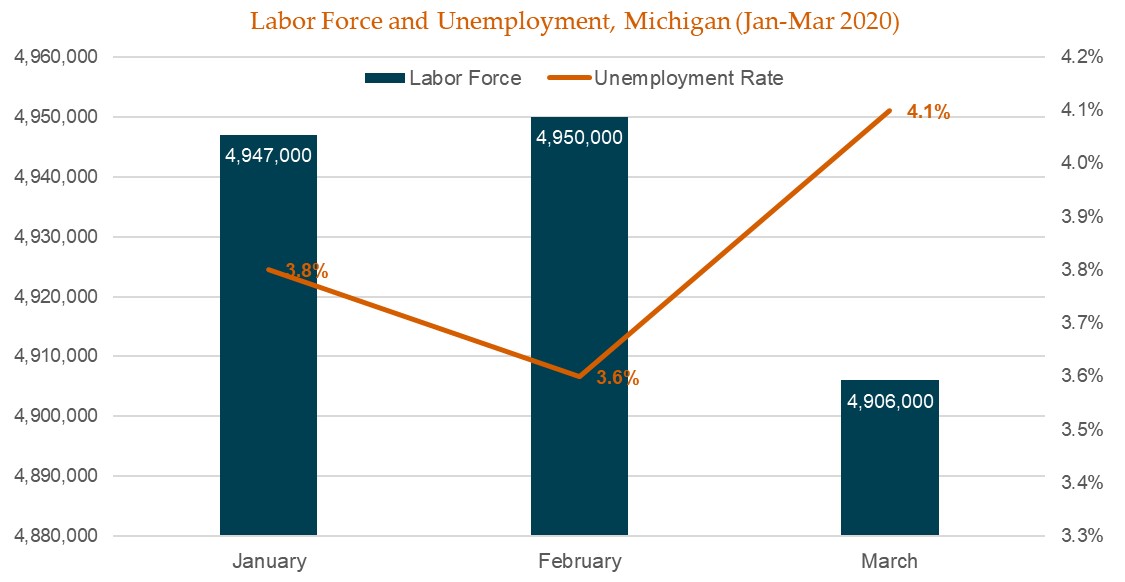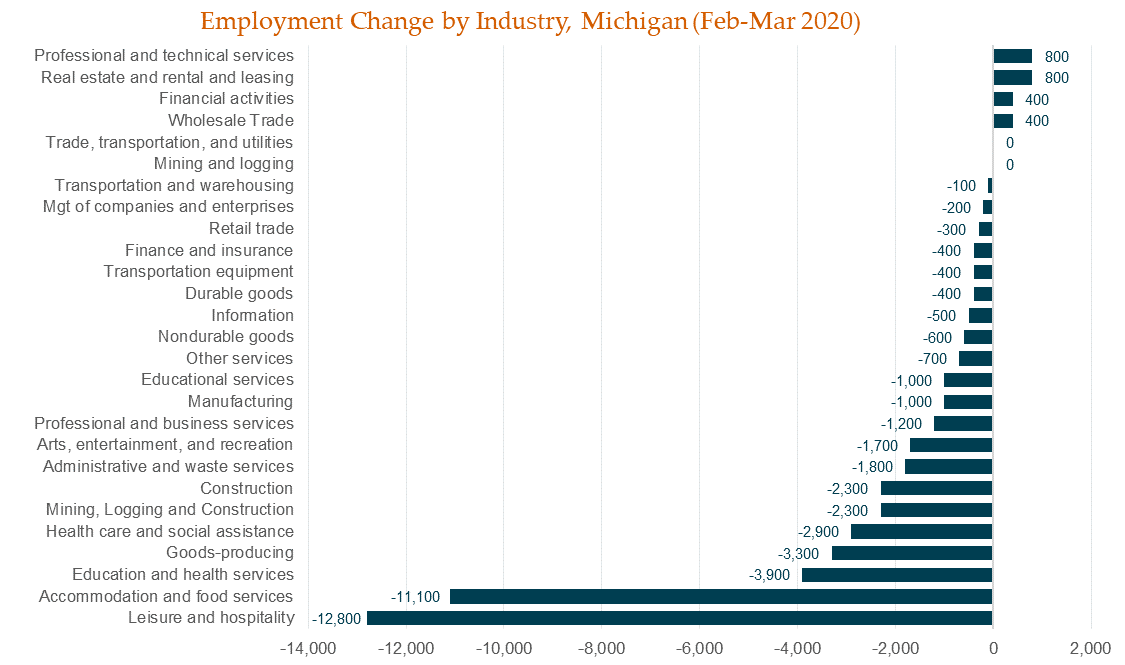Unemployment Climbing in Michigan
Michigan’s unemployment rate rose by half a percentage point to hit 4.1 percent in March, according to data released yesterday by Michigan’s Bureau of Labor Market Information & Strategic Initiatives. Although this equates to 65,000 fewer employed across the state, this still trails the 0.9 percent spike to unemployment seen nationwide, which stood at 4.4 percent last month. The latest employment data provided by the Local Area Unemployment Statistics (LAUS), a program of the U.S. Bureau of Labor Statistics, only covers the first half of the month and provides just a glimpse of the potential impact of COVID-19 on the state’s labor market. The observed spike in unemployment over-the-month reveals the initial impact of the pandemic on the state’s labor force, predominately attributed to the first wave of pandemic-related layoffs that occurred among Hospitality and Food Service jobs in the weeks leading up to March 14th. However, the majority of pandemic-related layoffs in Michigan occurred in the weeks following the period covered by this latest LAUS release, and information is not yet available to assess the implications of the “Stay Home, Stay Safe” Executive Order on the state’s labor force.

As illustrated in the figure above, the unemployment rate in Michigan was trending downward and the size of the labor force was at an all-time high prior to the initial impact of the pandemic. The dramatic increase to the state’s unemployment rate and the significant drop in the size of labor force over the first half of March highlight the early impacts of the pandemic on the state’s Hospitality and Food Services industries, which were among the first to experienced pandemic-related layoffs resulting from the global travel restrictions that occurred during the relevant period of study.
Changes by Industry
As broad industries, Leisure and Hospitality and Accommodation and Food Services suffered the greatest loss of workers compared to any sectors in Michigan over the period from February to the first half of March. The joint loss of nearly 24,000 workers experienced by these two industries over the month captures over one-fourth of all jobs lost throughout the state and reflects a combined growth rate of -6.1 percent. The Leisure and Hospitality sector experienced the largest change to employment with an industry-wide loss of nearly 13,000 workers (-2.9 percent), closely trailed by Accommodation and Food Services (-11,100 workers; -2.9 percent), and distantly followed by Education and Health Services (-3,900 workers; -0.6 percent).

The broad industry of Accommodation and Food Services can be further segmented into two detailed industries, Accommodation and Food Services and Drinking Places, which both ranked among the top industries in Michigan for job loss over the month, at -1,700 workers (-3.9 percent) and -6,200 workers (-1.9 percent), respectively. Gasoline stations also experienced a significant loss to employment, with 600 newly unemployed workers in March. This may seem insignificant compared to the volume of jobs lost in other industries, but 600 workers represents a 2.2 percent share of jobs for this industry and would rank second among Michigan industries in terms of proportional job loss over the month — only exceeded by the -3.9 percent loss incurred for Accommodation. Although Health Care and Social Assistance ranked fifth in Michigan with respect to the volume of jobs lost over the month, it is important to note that a majority of loss within this industry occurred within the Social Assistance sector (-1,400 workers; -1.7 percent) and that the data does not yet reflect the increased demand for health care practitioners resulting from the outbreak that occurred in the state over the weeks following the illustrated period of observation.
Subscribe to receive blog updates
{{cta(‘d60ba4b7-35ab-4063-b38f-075d8956d281’)}}


